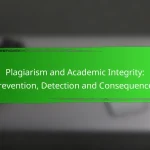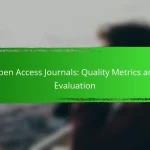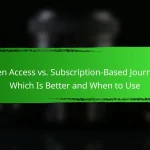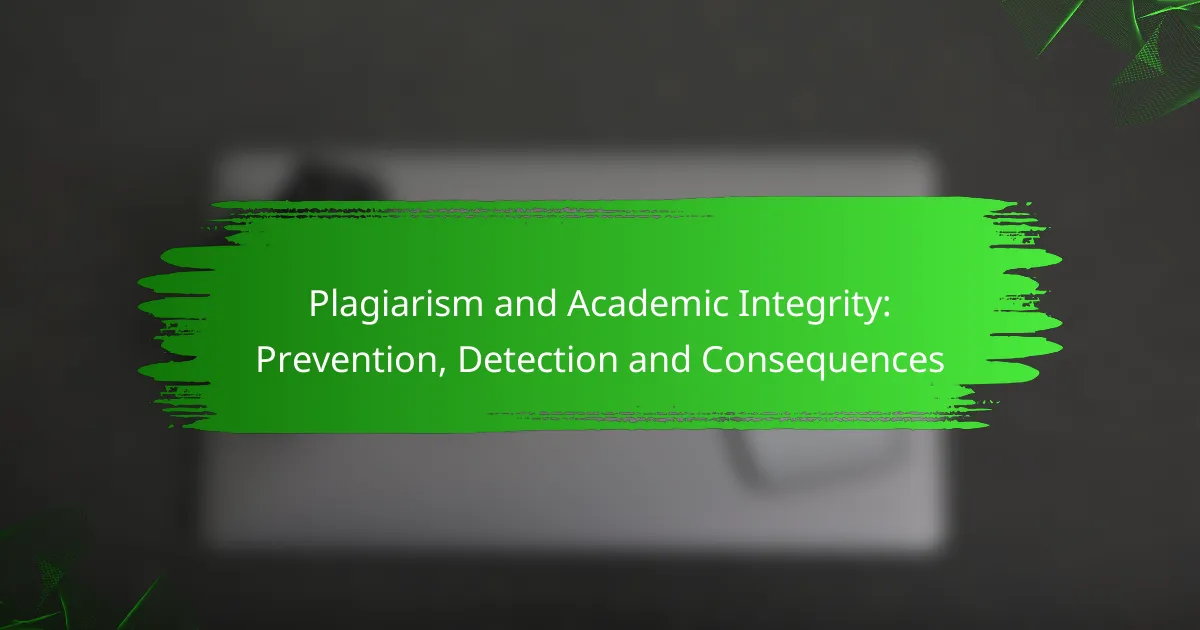Plagiarism poses a significant threat to academic integrity, necessitating proactive measures for prevention and detection. By leveraging technology, educational initiatives, and clear institutional guidelines, universities can cultivate an environment that discourages academic dishonesty. The consequences of plagiarism are serious, affecting not only academic performance but also future career prospects and reputations.
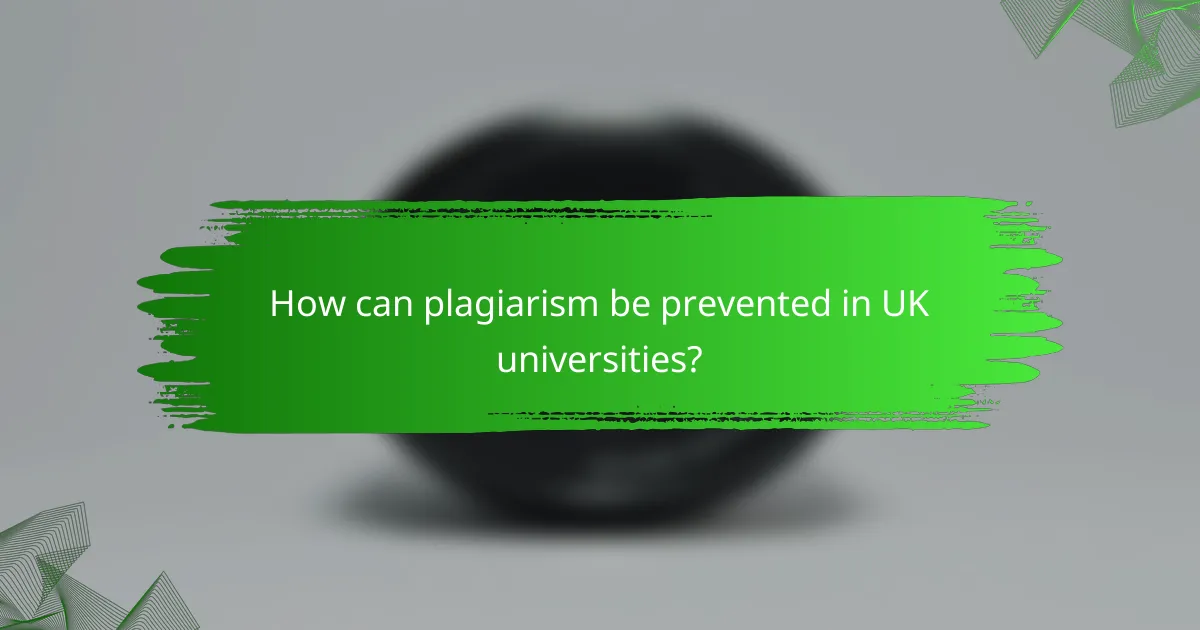
How can plagiarism be prevented in UK universities?
Plagiarism can be effectively prevented in UK universities through a combination of technology, education, and clear guidelines. By implementing robust systems and fostering a culture of academic integrity, institutions can significantly reduce instances of academic dishonesty.
Implementing plagiarism detection software
Utilizing plagiarism detection software is a key strategy for preventing academic dishonesty. Tools like Turnitin and Unicheck can scan student submissions against vast databases to identify similarities with existing works. Universities should ensure that all submitted assignments are checked, providing feedback to students on how to improve their writing.
Regular updates and training on how to use these tools effectively can enhance their impact. Institutions should also consider integrating these systems into their learning management platforms for seamless access.
Providing academic integrity training
Training students on academic integrity is essential for fostering a culture of honesty. Workshops and seminars can educate students about what constitutes plagiarism and the importance of original work. Such training should be mandatory for all incoming students and reinforced throughout their academic journey.
In addition to workshops, universities can provide online resources and tutorials that students can access at any time. This ensures that students have continuous support in understanding and adhering to academic integrity standards.
Encouraging original research practices
Encouraging original research practices helps students develop their own ideas and insights, reducing the temptation to plagiarize. Universities can promote this by offering research grants, mentorship programs, and opportunities for collaboration with faculty on projects. This not only enhances learning but also builds confidence in students’ abilities to contribute original work.
Providing access to diverse research materials and databases can also inspire students to explore unique topics, further minimizing the risk of unintentional plagiarism.
Establishing clear citation guidelines
Clear citation guidelines are crucial for helping students understand how to properly attribute sources. Universities should adopt standardized citation styles, such as APA or MLA, and provide comprehensive guides on how to use them. This clarity helps students avoid accidental plagiarism by ensuring they know how to credit others’ work appropriately.
Regular workshops on citation practices can reinforce these guidelines, and institutions should encourage the use of citation management tools like Zotero or EndNote to simplify the process for students.
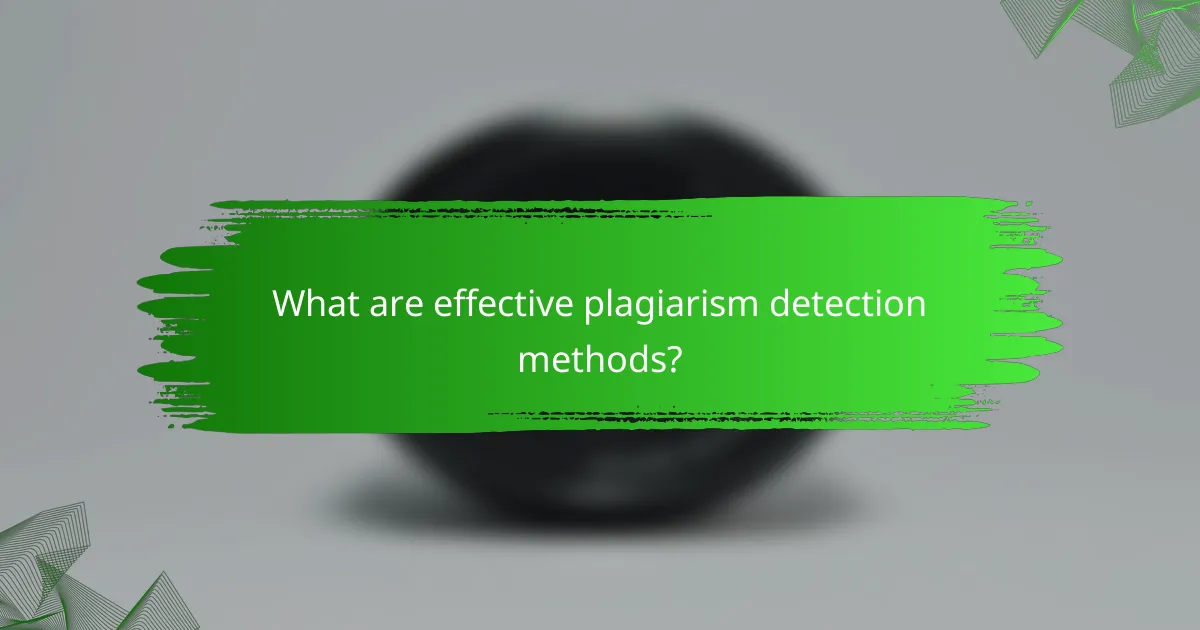
What are effective plagiarism detection methods?
Effective plagiarism detection methods include software tools that compare submitted work against a vast database of sources to identify similarities. These tools help maintain academic integrity by ensuring originality in student submissions and published works.
Using Turnitin for text matching
Turnitin is a widely used tool in educational institutions for detecting plagiarism through text matching. It compares submitted documents against a comprehensive database of academic publications, student papers, and internet sources, providing a similarity score that indicates the percentage of matched content.
To use Turnitin effectively, educators should encourage students to submit drafts for review, allowing them to understand and rectify any potential issues before final submission. Institutions often have specific guidelines on acceptable similarity thresholds, typically ranging from low single digits to around 20%.
Employing Grammarly for grammar checks
Grammarly is primarily known for its grammar checking capabilities, but it also includes a plagiarism detection feature that scans text against billions of web pages. This tool is beneficial for writers looking to ensure their work is both grammatically correct and free from unintentional plagiarism.
When using Grammarly, users should take advantage of its suggestions to improve clarity and originality. It is advisable to review the highlighted sections carefully and make necessary revisions to enhance the overall quality of the writing.
Utilizing Copyscape for web content
Copyscape is a popular tool for detecting plagiarism specifically in web content. It allows users to enter a URL or text to check for duplicate content across the internet, making it ideal for bloggers and website owners who want to protect their original material.
To maximize Copyscape’s effectiveness, users should regularly monitor their content and set alerts for any unauthorized use. Understanding the implications of duplicate content on search engine rankings is crucial, as it can negatively impact visibility and credibility online.
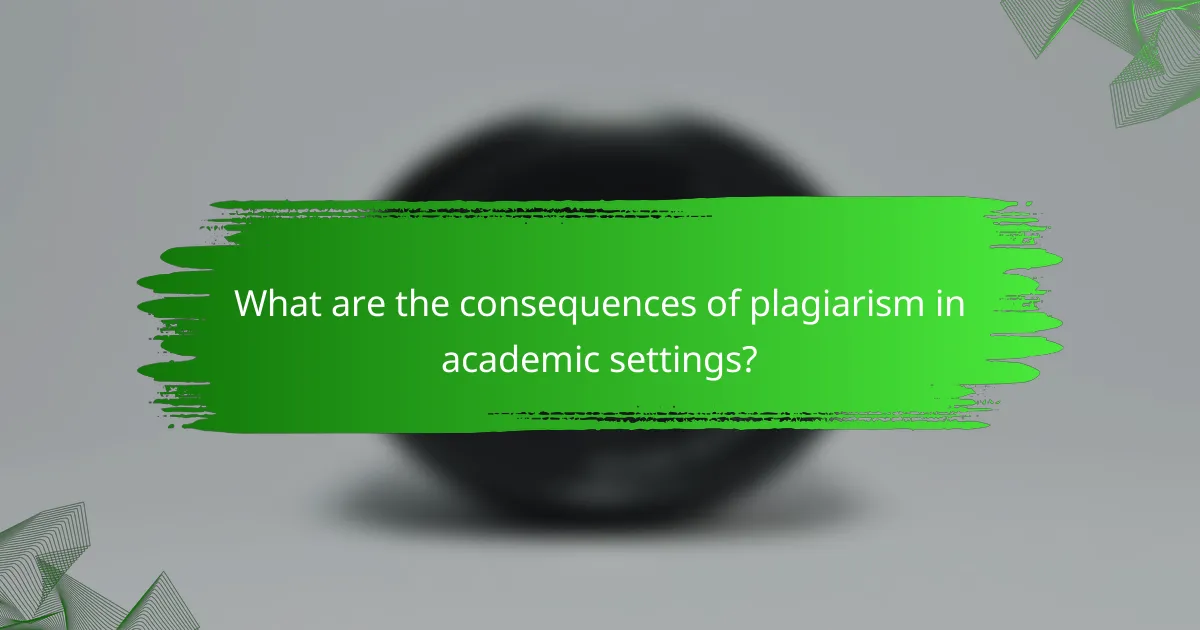
What are the consequences of plagiarism in academic settings?
The consequences of plagiarism in academic settings can be severe, impacting students’ educational journeys and future opportunities. These repercussions often include academic penalties, legal issues, and long-term damage to one’s reputation.
Academic penalties such as expulsion
Academic institutions typically impose strict penalties for plagiarism, which can range from failing grades on assignments to expulsion from the institution. The severity of the penalty often depends on the extent of the plagiarism and the institution’s policies.
For instance, a student caught submitting a plagiarized paper may receive a zero for that assignment, while repeated offenses could lead to suspension or expulsion. It’s crucial for students to understand their school’s academic integrity policy to avoid these consequences.
Legal repercussions for copyright infringement
Plagiarism can also lead to legal issues, particularly when it involves copyright infringement. Using someone else’s work without permission can result in lawsuits, fines, or other legal actions.
For example, if a student publishes a plagiarized paper that includes copyrighted material, the original author may pursue legal action. Understanding copyright laws and ensuring proper citation can help mitigate these risks.
Damage to reputation and career prospects
Engaging in plagiarism can severely damage a student’s reputation, affecting their relationships with peers and educators. Once labeled as dishonest, it can be challenging to rebuild trust within academic and professional circles.
Moreover, a record of academic dishonesty can hinder career prospects. Employers often conduct background checks, and a history of plagiarism may disqualify candidates from job opportunities. Maintaining academic integrity is essential for long-term success.
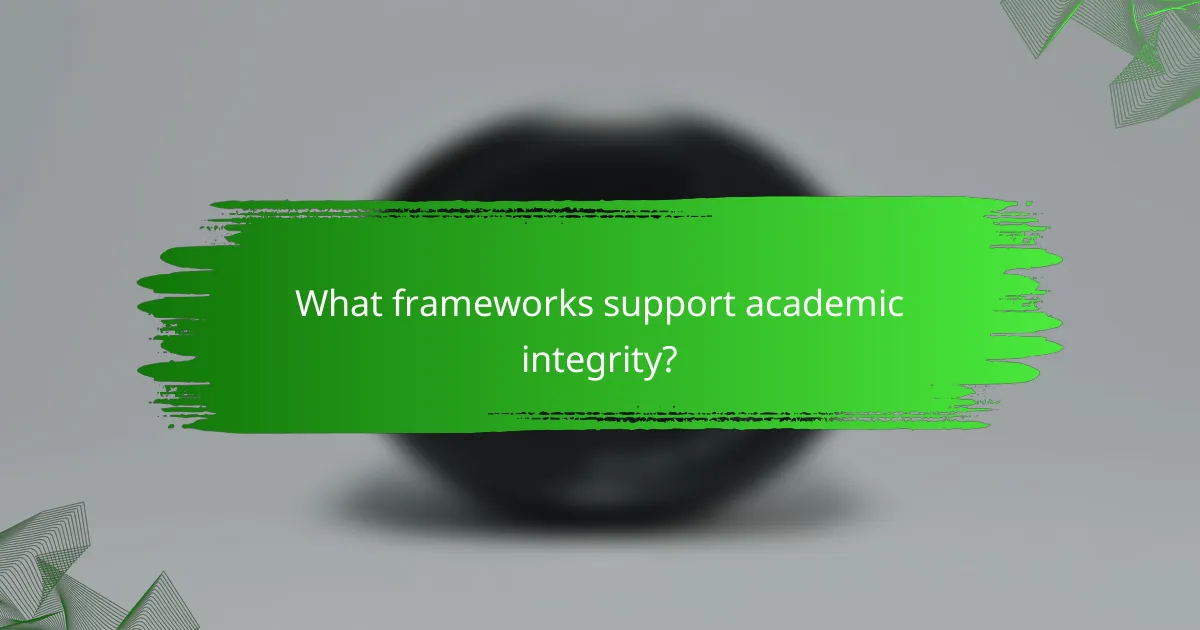
What frameworks support academic integrity?
Frameworks that support academic integrity provide guidelines and standards to ensure ethical behavior in educational settings. These frameworks help institutions promote honesty, prevent plagiarism, and establish consequences for violations.
UK Quality Code for Higher Education
The UK Quality Code for Higher Education outlines expectations for academic integrity within UK universities. It emphasizes the importance of maintaining high standards in teaching and learning, ensuring that students understand the principles of academic honesty.
Institutions are encouraged to develop clear policies that define academic misconduct and provide resources for students to learn about proper citation and referencing practices. Regular training and workshops can help reinforce these standards.
University honor codes and policies
Many universities implement honor codes that explicitly state the expectations for academic integrity among students. These codes often require students to pledge not to engage in dishonest behaviors, such as cheating or plagiarism, and outline the consequences for violations.
Honor codes can vary significantly between institutions, with some universities adopting more stringent policies that include peer review processes. It’s essential for students to familiarize themselves with their university’s specific honor code and related policies to avoid unintentional violations.
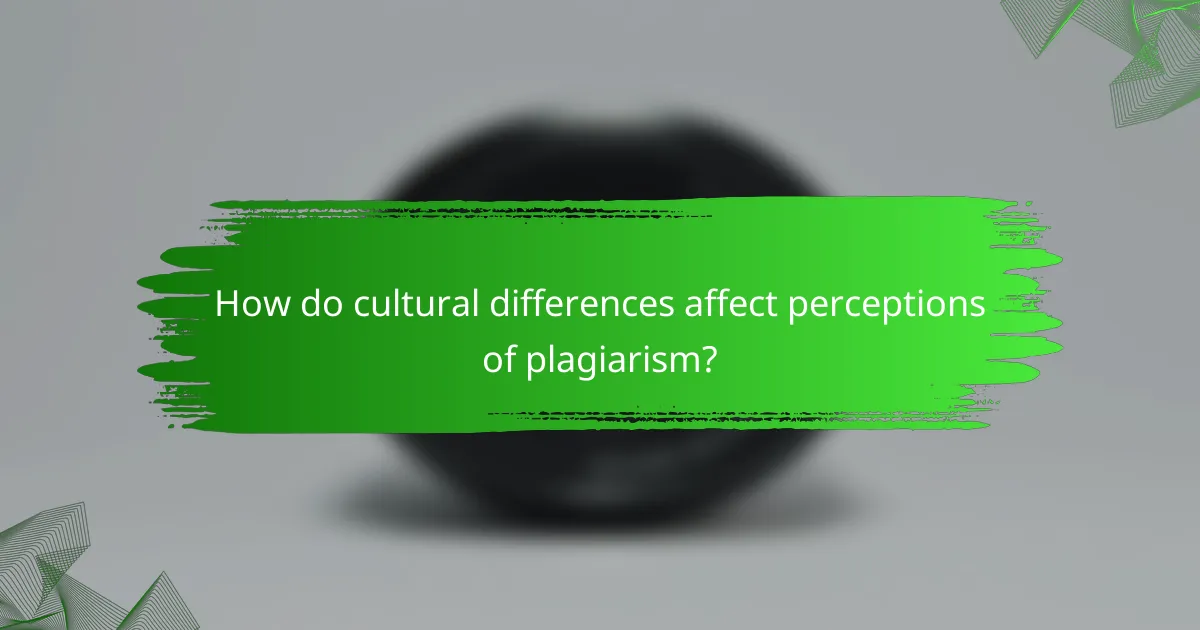
How do cultural differences affect perceptions of plagiarism?
Cultural differences significantly influence how plagiarism is perceived and addressed in academic settings. In some cultures, collaborative work is encouraged, while others emphasize individual authorship, leading to varying interpretations of what constitutes plagiarism.
Variations in citation practices across countries
Citation practices differ widely around the world, affecting how students and researchers attribute sources. For instance, in the United States and many Western countries, strict adherence to citation styles like APA or MLA is expected, while in some Eastern cultures, less formal methods of acknowledgment may be common.
Understanding these variations is crucial for international collaboration. For example, a student from a collectivist culture might not view uncredited ideas as plagiarism, whereas a peer from an individualistic culture would see it as a serious offense. Educators should provide clear guidelines on citation expectations to bridge these gaps.
Understanding collaborative work norms
Collaborative work norms can vary significantly, impacting perceptions of plagiarism. In some cultures, group projects are the norm, and sharing ideas freely is encouraged, which can blur the lines of individual contribution and ownership.
To navigate these differences, it’s essential to establish clear agreements on authorship and contribution before starting collaborative efforts. This can include defining what constitutes shared work versus individual input, helping to prevent misunderstandings about plagiarism.
